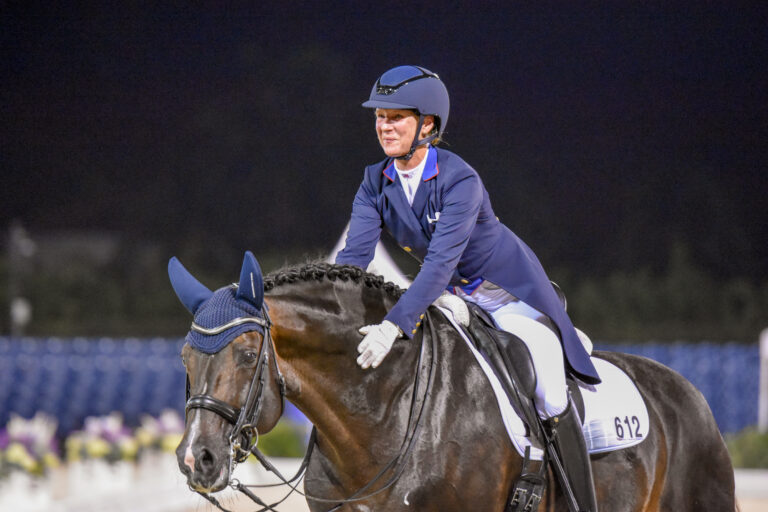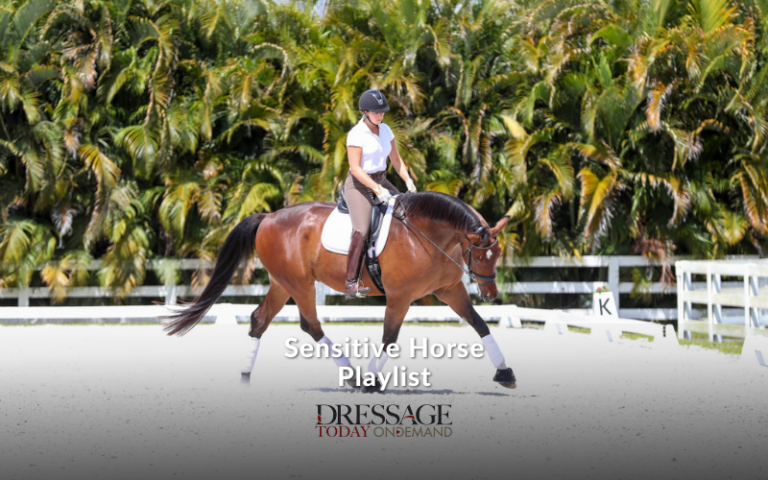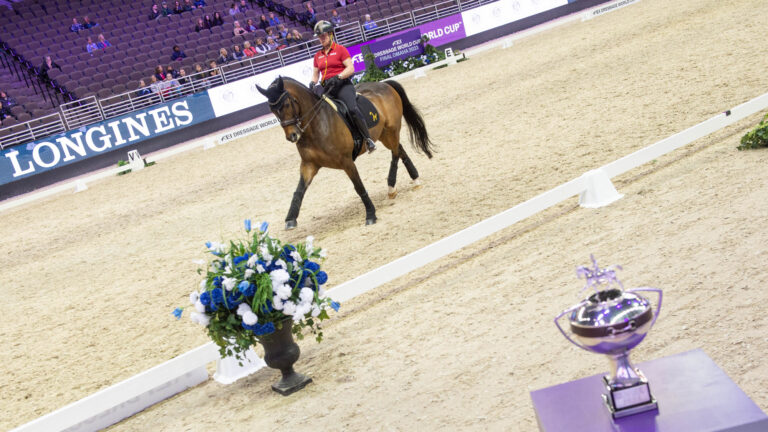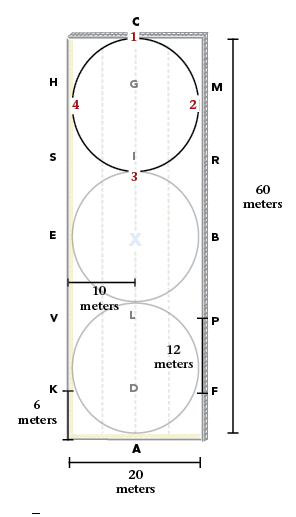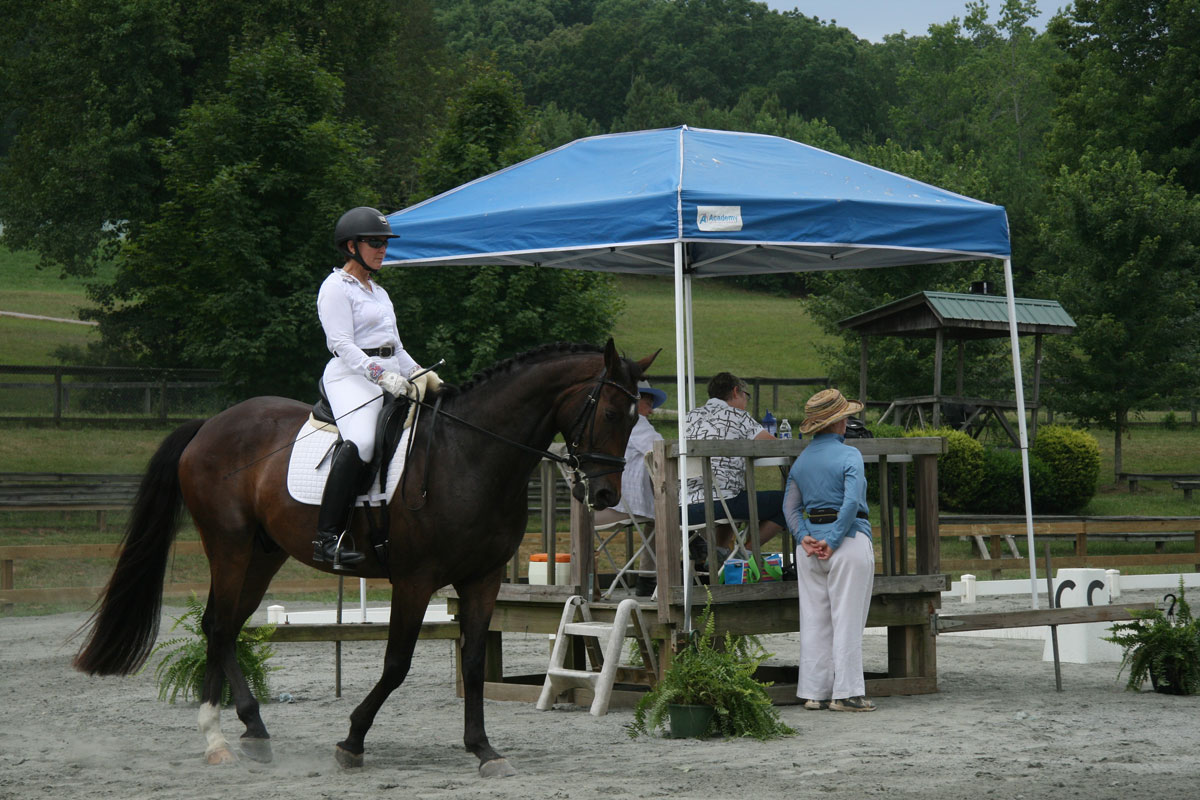
If you know how long it takes for your horse to trot around the outside of a dressage arena, it could help to reduce one small source of anxiety you might have while showing.
When the 60-second rule to enter at A after the judge’s bell was reduced a decade ago to 45 seconds, the first thing I did was time my mare (16hh, normal-length stride) since I didn’t want to be glancing at my watch at that moment. I knew it took about 60 seconds to make a complete circuit, so I wanted to know what the sweet spot for 45 seconds would be. Turned out that spot was near E or B. That meant that the “no-rider zone,” where I would need to do a 180-degree turn when the bell rang, was between A and E/B, and elsewhere I could just continue with the track I was on.
Here’s the deal. I am beginning to suspect that many riders either don’t know about the 45-second rule or overestimate how far their horse can go in that time. It’s not that judges are hot to eliminate someone for this rule before they’ve even entered the ring. They aren’t. And they can’t eliminate someone unless they are paying close attention to a stop watch, which they won’t be when busy writing comments on the previous test, checking the day sheet, sorting out rider numbers and dodging the occasional wasp dislodged earlier from the booth’s rafters.
Therefore, riders fudge this rule issue in many instances when unknowingly taking a lot longer than 45 seconds or even 60 seconds to locate the gate at A. The ugly moment of truth could come, however, at a show when the ring runs really late, or maybe at a championship, when the judge at C will be directed by show management to be more on top of this.
I really didn’t like this rule change. I don’t think the 15 seconds it saves makes any real difference by the end of the day, while it can add an extra layer of nerves on an already anxious rider. Another reason I don’t like it is that it turns me into sort of a traffic cop — I don’t want to be ringing the bell if the rider is in that “no-rider zone” and make them reverse their entrance plan.
So, I take the time to find the on-deck rider before I ring the bell (harder than you might think sometimes, especially if they are out of my line of sight behind the booth), which can eat up more than those special 15 seconds. I just don’t need the distraction if I am still writing comments from the previous ride.
In the last two shows I’ve judged, both in northern regions where the show year starts later, it may have been the first outing for many of the riders. At least, that’s what I was wondering when quite a few riders seemed foggy on the 45-second notion of finding A. I was talking to a rider later and asked if she knew how long it took to go around the ring. She didn’t. Then I asked her if she knew what the rule was for entering at A after the bell. She answered: “60 seconds.” Nope, I said, that rule changed 10 years ago, to 45 seconds. Her response gave me a good laugh: “This is my first show in 15 years.”
(Of course, if you haven’t shown in 15 years, maybe it would be a great plan to check for any rules that might have changed.)



